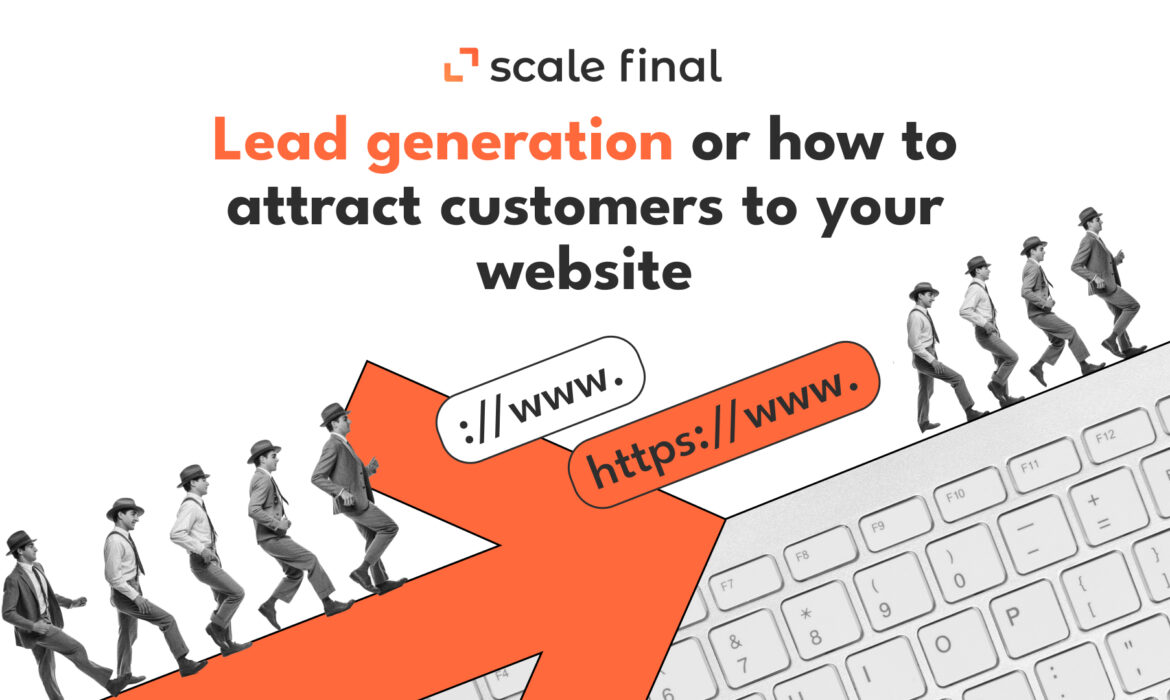Home • Blog • Lead generation or how to attract customers to your website
Lead generation or how to attract customers to your website
A user who wants to purchase or order a service on your website is called a lead. Both online and offline businesses need leads. In simple words, lead generation is finding potential customers and collecting their contact information for further interactions.
Lead generation exists in every niche. Only the methods of acquiring leads differ, influenced by the specifics of your company’s field of activity.
Both marketers and sales departments work on this process. The former combine SEO, contextual advertising, targeting and social networks. The latter focus on improving the work of customer support and sales managers.
The ultimate goal of lead generation is to sell goods and services and build an active customer base.
How to evaluate lead generation?

You can evaluate your lead generation by quality and quantity of leads.
If the quantity of leads varies from business to business depending on your goals, it is quite easy to assess the quality of leads. These are potential customers who:
- Meet the parameters of the target audience,
- Have left their contact details,
- Are interested in the product or service
- Are willing to contact managers
- Have made a purchase.
How do you capture leads on a website?

Lead generation on the website benefits the business because if the visitor has left their data, they’re most likely interested in making a purchase.
Even if they’re not planning to do it here and now.
Another plus is that lead generation on the website requires less investment than buying other types of advertising or attending various conferences and exhibitions.
The choice of effective lead generation channels depends on your business’s sales and development goals.
Now for the lead generation tools on the website.
Feedback form
This is the first thing that comes to mind regarding lead generation. But there’s more to it than that. That’s why you must keep the following in mind when working with the feedback form:
- Brevity – no one wants to spend extra time reading additional information, so the form shouldn’t scare a potential client with its complexity and likely time wasting;
- Relevance – pay attention to the possibility of leaving your contact information once without being too intrusive.
If the form pops up too often, it will bring negativity.
Follow these essential rules to make your feedback form a valuable and profitable tool.
Lead magnet
Another effective way to build your customer base is to offer a potential customer a free gift in exchange for a specific action: filling out a feedback form, subscribing to a newsletter, etc.
For example, if you sell cosmetics for face and body care, offer potential customers a checklist to help them choose the right cream for their skin type, asking for an email and a phone number.
Other options that work are:

Your job is to offer the potential customer something of value, not just beg for their contact information.
Newsletter
The task of a lead magnet is to present a potential customer with a gift on a one-time basis, while a newsletter implies regular communication.
And this tool must be used properly. Nowadays, there is an opinion that emails are a thing of the past, and nobody reads the messages sent.
However, it is a great way to warm up the customer for an extended time and motivate him for additional orders or at least not let him forget that your company exists.
You shouldn’t underestimate the newsletter because quality content will find its readers.

Landing page
The main goal of a landing page is lead generation and nothing more.
A landing page should be sales-oriented, familiarize the visitor with the product or service, include a lead magnet offered in exchange for contact information, and at the same time advertise exclusively to your target audience.
Tip: Feedback forms also work on the landing page, so you can combine both lead generation channels.
Useful content
If you’re told there’s too much content and you shouldn’t post it, don’t listen.
In the vastness of the internet, most of the posted articles are of average and low quality, customers easily recognize this and therefore ignore them.
Informative and relevant blog content on a website attracts potential customers, increases trust in the brand as a whole and strengthens your status as an expert in the niche.
Read our guides on how to write content that sells: Part 1, Part 2, Part 3, Part 4
Note: That’s why it’s important to focus on the quality, usefulness and regularity of the content you publish. As a bonus, you can improve your SEO, climb to the top of search results, and get a steady stream of organic traffic that, if handled properly, will convert into leads in the future.
Customer support
Customers can’t always find the information they need on the website, so they contact online consultants for help.
By writing a question to the chatbot, the user gets quick help, and you get the contact details of a potential customer.
Among other things, a chatbot can respond to customers, because consumers are spoiled with fast service at a high level and unwilling to wait even a few minutes.

Tip: to dive deeper, check out our B2B lead generation guide: Uncovering the complexity of B2B lead generation
Author
-
 ScaleFinal Content Writer
ScaleFinal Content WriterExperienced writer in different domains. I package meaning into words and bring people together. Know how to convey the vision and values of a product in writing. I like reading, movies, sports and blockchain.
View all posts






